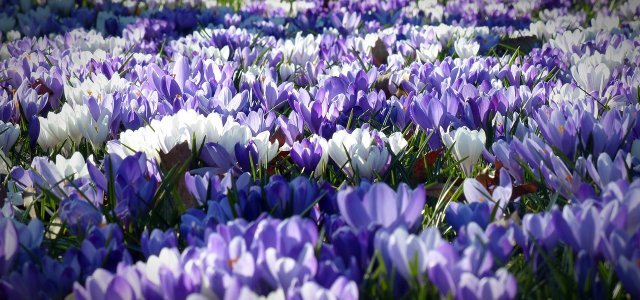
With the first warm rays of sunshine they awaken: the early bloomers. Crocuses, daffodils and the like not only herald spring, but also play an important role for bees. Learn more about early flowering plants and shrubs here.
What are early bloomers?
Early bloomers are plant species that are the first to form their foliage and flowers in the year. They awaken as early as winter with the first warm rays of sunshine and continue to bloom into spring, roughly from mid/late February through May.
Early bloomers are true “survival” professionals and defy cold and frost thanks to their special constitution. For example, they have storage organs such as tubers and bulbs in which energy is stored. This stored energy is necessary for early flowering. In spring, due to a lack of sunlight, photosynthetic power alone is not enough to make shoots, flowers and leaves sprout.
In addition, many early bloomers grow very close to the ground, so they are protected from the cold by fallen foliage. For example, when it freezes, snowdrops take a break from growth and simply resume when temperatures climb. The natural location of early bloomers is also often in the shade of forests. That’s why they bloom so early: they need to “be through” with their flowering and reproduction quickly, before the trees with their canopy of leaves barely let any light through to the ground.
But early bloomers aren’t just ground-hugging bulbous plants like tulips and daffodils; there are also early-blooming perennials and shrubs.
Contents
When to plant early bloomers?
Actually, autumn is the ideal time to put the bulbs of early bloomers in the ground.
If you have missed this time, fortunately, there is still an opportunity to make up for it in the spring. If there are no sub-zero temperatures for a few days and the ground is not frozen, you can plant the early bloomer bulbs. As a guideline, plant the bulbs twice as deep in the soil as they are tall themselves. A little compost will also do them good. After planting, the bulbs need about three weeks to sprout.
Early bloomers: Not only beautiful, but also important
Early bloomers are beautiful to look at. But they also perform a particularly important function for the animal kingdom: in early spring, they serve as an indispensable first food source for bees and other insects. Bumblebee queens fly out in search of food at temperatures as low as two degrees, and honey bees venture out into the cold on the first sunny days of February.
Bees are becoming increasingly distressed as they find less and less food due to the critical destruction of their habitats by pesticides and monocultural agriculture. Bee mortality is on the rise. And this has threatening consequences for us, crop losses for example.
The food situation comes to a head further in winter and spring, when the bees undertake the energy-sapping task of building up and stabilizing their colonies. To do this, they need sufficient pollen and nectar, which tend to be in short supply in late winter and early spring. Only the early bloomers can provide the bees with this.
That’s why it’s worth planting early bloomers in your own garden to protect bees and insects. Here we present some of the most important early bloomers.
These are the most important early bloomers
Bulbous plants
- Crocuses: the early bloomer classic blooms from February to April. Small crocus, elfin crocus and spring crocus can be found in most gardens. But the real bee attractions are early-blooming wild crocuses. They are often called botanical crocuses in the trade.
- Snowdrops: March can often be another frosty month. The snowdrops do not mind. They bloom even when it snows and are therefore perfect for providing bees with an early food source.
- Hyacinths: Whether star hyacinths or grape hyacinths, these spring bulbous plants beguile bees with their enticing supply of pollen and nectar. They bloom mainly in March and April.
- Tulips: As with hyacinths, the feral varieties of tulips are especially bee-friendly. Wild tulips bloom in April and May.
Perennials
- Adonis florets: The bright yellow early-flowering Adonis florets in particular are a real bee magnet. It is all the more critical that this species is severely threatened in Europe.
- Scented violets: They are diverse, easy to care for and smell of spring like no other plant. Bees also like them very much. Their blooming season extends from March to April.
Shrubs and trees
- Salt willow: a hundred points in terms of bee-friendliness. As soon as the pollen-rich palmate catkins of the salweed bloom, in March and April, bees buzz around them enthusiastically.
- Cornelian cherry: In mild weather, it blooms from late February through March/April. It holds a rich supply of nectar for bees and golden yellow blossoms that give off a light honey scent for us.
- Common hazel: This tree has its flowering time from February to March and causes quite a problem for allergy sufferers. But for bees, the hazel blossom is an important source of food.

